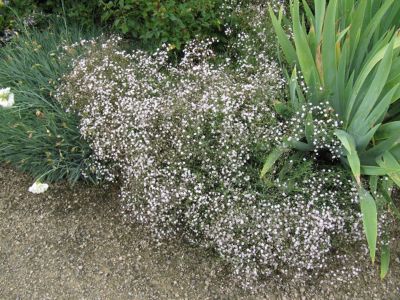Baby’s Breath Problems
Baby’s breath (Gypsophila paniculata) is an herbaceous perennial that is hardy in USDA zones 3 to 9. It usually grows between 2 and 4 feet (60 and 120 cm.) tall with a similar spread. This plant has slender stems and narrow leaves, with showy white sprays of flowers. To keep baby’s breath plants happy, plant them in full sun in a site with good drainage. They need regular watering but will die if they get “wet feet.” The plants are so healthy and vital that they are considered invasive in several states, but you may encounter a few baby’s breath issues. Despite their usual vigor, your baby’s breath may experience some health problems. Here are a few Gypsophila problems to look out for: If you note discolored and distorted foliage, your baby’s breath may be afflicted with leafhoppers. Aster leafhoppers are tiny green insects that spread aster yellows disease. Leafhoppers encounter the disease on infected wild plants and bring the problem into your garden. They can pass this onto the baby’s breath plants. Using floating row covers in early spring keeps leafhoppers off the plants. You can also take preventative action by applying neem oil to the plants during their first month of growth. Blotched or discolored leaves can also indicate that your Gypsophila problems include a fungus causing botrytis gray mold. Control these baby’s breath issues by improving the air circulation between plants by thinning them out and/or transplanting them to a sunnier location. Dusting leaves with sulfur also helps.
Why is My Gypsophila Dying?
Unfortunately, a few problems of baby’s breath are serious enough to kill the plants. Crown and root rots can be the end of your Gypsophila. These rots are caused by bacteria and fungi that live in the soil. If you don’t see new shoots in spring, this is likely the problem. You’ll first see the damage on the crown, the thick area where the root system meets the base of the plant at the soil level. As the rot spreads, the crown turns mushy and bad-smelling. Fungi attack next and the roots can become rotten and blackened. The plant dies in a few days. Although you cannot cure it, you can prevent it by adding compost to the soil for its fungus-fighting qualities and keep mulch away from the crowns in winter. Another of baby’s breath issues that can kill the plant is aster yellows, spread by leafhoppers and aphids. If your problems with baby’s breath include aster yellows, the plant foliage is stunted and the leaves will wilt and die. You’ll need to remove and throw away all plants infected with aster yellows. To save the rest of your plants, spray generous amounts of neem insecticide on them several times a day for 10 days to kill insect pests carrying the disease.
